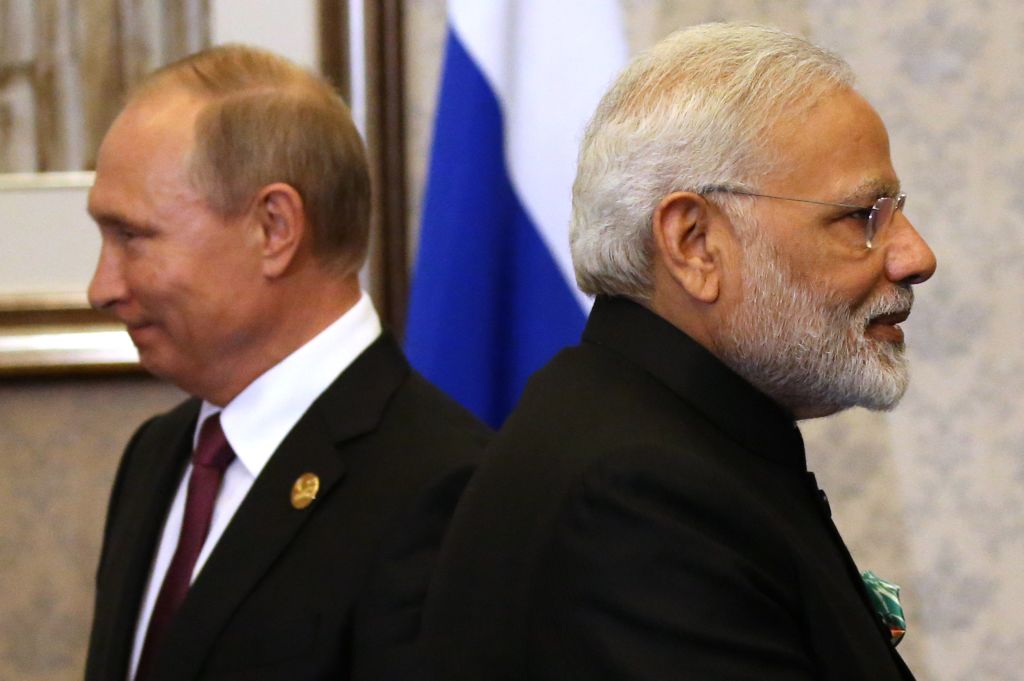 Print This Post
Print This Post- The Strategist - https://www.aspistrategist.org.au -
Putin’s folly and the end of Indian multialignment
Posted By Ian Hall on March 7, 2022 @ 13:15

Article printed from The Strategist: https://www.aspistrategist.org.au
URL to article: https://www.aspistrategist.org.au/putins-folly-and-the-end-of-indian-multialignment/
[1] clear lesson: https://www.washingtonpost.com/archive/politics/1992/01/17/lessons-from-the-gulf-war/bad0ef92-4339-4b47-a589-10e24de23265/
[2] an even more serious blow: https://www.csmonitor.com/1991/1007/07182.html
[3] C. Raja Mohan’s phrase: https://www.google.com.au/books/edition/Crossing_the_Rubicon/DkphQgAACAAJ?hl=en
[4] dialogue: https://www.nytimes.com/2004/11/28/books/chapters/engaging-india.html
[5] 10 times larger: https://data.worldbank.org/indicator/NY.GDP.MKTP.CD?end=2020&locations=IN&start=1991
[6] slowed: https://www.reuters.com/world/india/indias-modi-has-mixed-record-economic-management-2022-01-27/
[7] very hard: https://www.wsj.com/articles/indias-economy-is-healing-but-battered-by-covid-19-waves-11630414375
[8] Islamist insurgency in South Asia: https://thediplomat.com/2021/07/what-does-a-taliban-government-mean-for-the-rest-of-south-asia/
[9] pressuring India: https://carnegieindia.org/2021/03/10/road-from-galwan-future-of-india-china-relations-pub-84019
[10] multialignment: https://www.thehindu.com/opinion/lead/indian-diplomacy-non-alignment-to-multi-alignment/article13982580.ece
[11] ambiguity: https://carnegieendowment.org/2021/03/03/non-allied-forever-india-s-grand-strategy-according-to-subrahmanyam-jaishankar-pub-83974
[12] evasion: https://www.youtube.com/watch?v=wJ-qsefgv-k
[13] 60–85%: https://indianexpress.com/article/explained/india-russia-military-weapons-defence-ties-7795804/
[14] primary supplier of civilian nuclear technology: https://www.hindustantimes.com/india-news/russia-starts-manufacturing-reactor-for-kudankulam-nuclear-power-plant-101642458342733.html
[15] engaged Russia: https://www.orfonline.org/expert-speak/india-russia-and-the-new-era-of-global-politics/
[16] economic resilience and self-reliance: https://www.orfonline.org/research/the-dynamics-of-self-reliant-india-69132/
[17] domestic defence industry: https://www.brookings.edu/research/the-indigenisation-of-indias-defence-industry/
[18] the Quad: https://www.thehindu.com/news/national/with-quad-tech-plan-india-further-closes-door-to-china-firms/article36669649.ece
[19] diversify its arms supplies: https://timesofindia.indiatimes.com/blogs/toi-editorials/diversify-finally-dependency-on-russian-arms-no-longer-viable/
[20] Russia–India–China grouping: https://www.orfonline.org/research/growing-russia-india-china-tensions-splits-in-the-ric-strategic-triangle-63448/